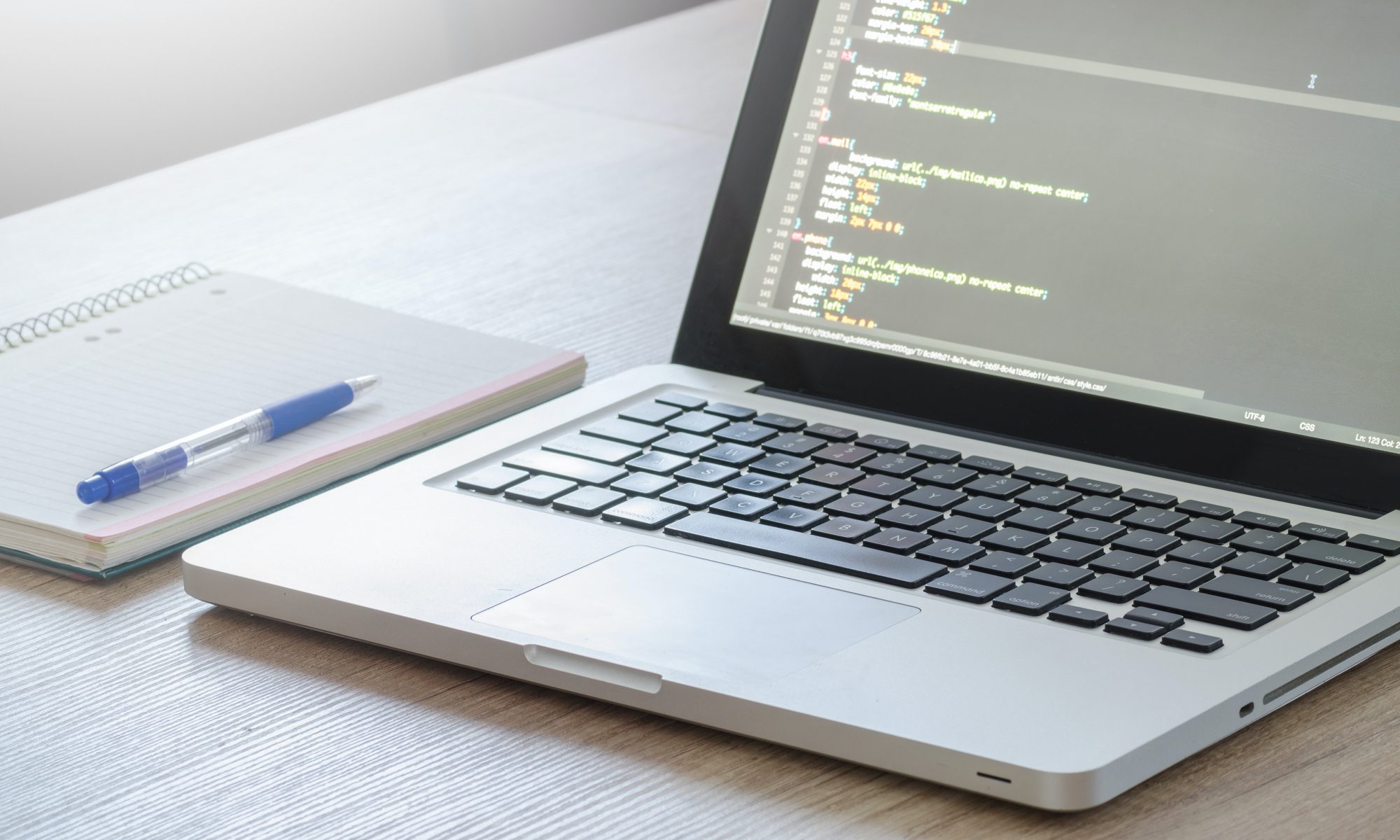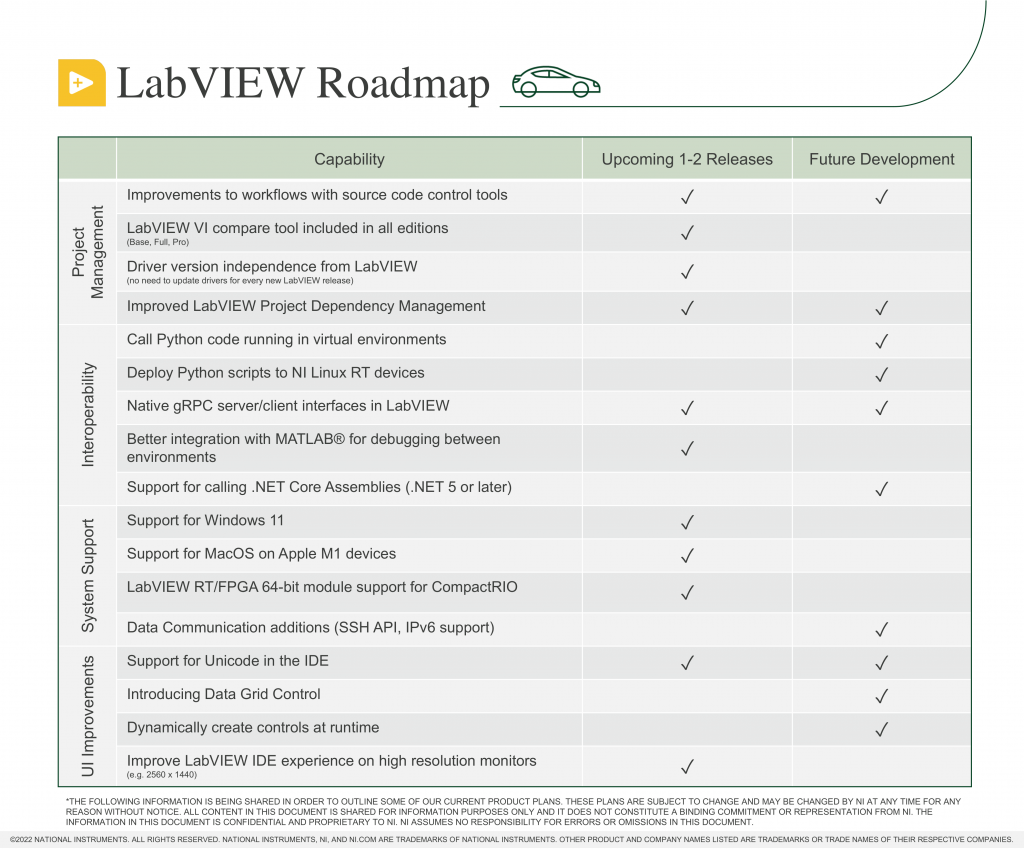Setup and Optimize the National Instruments PXI-5441 Waveform Generator
The National Instruments PXI-5441 is a powerful PXI waveform generator designed to support high-speed waveform downloads up...

With a potential Q3 release from NI, LabVIEW 2022 is a highly anticipated release. With the drop of their project roadmap in March of this year, NI has outlined their current product plans and their expected trajectory for different capabilities. While the roadmap does not detail many specifics as the plans are subject to change, it does give an overview of what we can expect from the software within the categories of project management, interoperability, system support, and UI experience.

Project Management
Within the upcoming 1-2 releases of LabVIEW 2022, the focus on improving project management starts with source code control tools to improve workflow. These controls will also be improved upon in future development. The roadmap introduces the release of a LabVIEW VI compare tool that will be included in the base, full, and pro editions. The roadmap also indicates that LabVIEW 2022 will eliminate the need to update your drivers with every new LabVIEW release with independent driver versions.
Additionally, there will be new and continued improvements to the management of Dependencies in LabVIEW projects. While the roadmap does not outline any specifics, there are certain areas where improvements to Dependencies would be incredibly helpful. Currently, items cannot be directly added to the Dependencies list. When an item is added, deleted, or saved in the project, dependencies are automatically updated. However, the item does not show up under Dependencies if the subVI is manually added under the target. Because of this, the user has to take care to prevent inaccurate dependencies when naming or moving dependent files.
Interoperability
A system and application’s capacity to connect and interact with one another without input by the end user is integral to a successfully running software. To that end, the LabVIEW 2022 Roadmap lists two new capabilities for Python that are slated for future development. These capabilities are to “call Python Code running in virtual environments”, and to “deploy Python scripts to NI Linux RT devices”.
Listed to be in the upcoming 1-2 releases and for future development are native gRPC server and client interfaces in LabVIEW. This would make it easier to construct distributed apps and services, allowing for direct contact of a method on a server program that is running on a distant computer as though it was a local object. In addition, the 2022 roadmap lists the capability to improve integration with MATLAB® as an upcoming release, which would result in cross-environment debugging.
System Support
Expanding the systems that can support LabVIEW 2022 is another focus of the Roadmap. Support for calling .NET core assemblies within the .NET open-source software framework (for version 5 or later) is slated for future development. Both Windows 11 and MacOS on Apple M1 devices are also listed to receive support, with these capabilities scheduled to become available in the upcoming 1-2 releases.
The LabVIEW 2022 Roadmap also lists LabVIEW RT/FPGA 64-bit module support for CompactRIO to become available soon. This would be a welcome addition. as it is possible to install the 32-bit version of LabVIEW alongside the 64-bit version, and the same activation key can be used for both.
Support for IPv6 and SSH API are also listed for future development, as additions to the data communications category.

UI Improvements
Lastly, the LabVIEW 2022 Roadmap lists the top priorities of their current plan to improve user interface, starting with the integrated development environment (IDE). Projected for both the upcoming 1-2 releases and future development is the capability for Unicode to be supported in the IDE. Due to the fact that LabVIEW is a software package for different platforms, it is necessary for it to support various languages through the usage of the multi-byte encoding system (MBCS).Because of this, many users have experienced limited or nonexistent functionality of Unicode within different / previous LabVIEW versions. The Roadmap also outlines plans for the upcoming release to include improvements for how users experience LabVIEW IDE on high resolution monitors.
Lastly, Data Grid Control is being introduced for future development, as well as the ability to create controls dynamically at runtime.
More Information:
https://forums.ni.com/t5/LabVIEW/LabVIEW-Roadmap-2022/td-p/4218319
A monthly email packed with valuable content—industry news, tutorials, obsolescence updates, and more. No sales pitches, just insights we think you'll find helpful!
The National Instruments PXI-5441 is a powerful PXI waveform generator designed to support high-speed waveform downloads up...
Companies in almost every industry are being transformed by artificial intelligence, and autonomous machines are...
The PXIe Platform from National Instruments offers an incredibly valuable toolset for test and measurement innovation. Its...
It is no secret that simulation and testing is an important part of designing circuits....